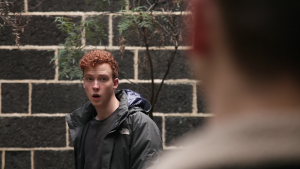Brooks, M. (2016). Future Content Experiences: The First Steps For Object-Based Broadcasting. [Blog] Research & Development. Available at: http://www.bbc.co.uk/rd/blog/2015-03-future-content-experiences-the-first-steps-for-object-based-broadcasting [Accessed 29 Jul. 2016].
This blog discusses the BBC’s R&D team’s mission to delve into creating more personalised and accessible programmes through Object Based-Broadcasting, which allows the content of a program to be individually tailored to the requirements of the audience member. Brooks describes an object is an individual media asset such as a video clip, audio clip, a still image or a caption. These are fundamental objects which come together to create a completed production. In object based broadcasting these objects are broadcasting to everyone along with information to reassemble them to suit the viewer’s preferences, technological capabilities and environment. This technological development is important with audiences eager for more personalised content. With objects being assembled differently depending on the viewing/listening device and environment the experience is optimized for every consumer. For example, someone watching a program on a big screen might want a different version than someone who is watching it on their phone. Furthermore, programmes can be tailored for the consumer for instance an individual might prefer a different mix between foreground and background then another. Or a program could be tailored to the individual’s mood or the time they have to view it. Object based broadcasting will have an important place in the future of media production and distribution. While this article primarily discusses OBB in terms of TV and radio, the same concept applies to film. Object-based technology could be particularly interesting in terms of cinema sound design.
May, S. (2015). Is Dolby Atmos the future of cinema sound?. [online] TechRadar. Available at: http://www.techradar.com/au/news/audio/is-dolby-atmos-the-future-of-cinema-sound-1088428 [Accessed 2 Aug. 2016].
In this article May discusses Dolby’s latest cinema sound format ‘Dolby Atmos’ and its potential within the future of cinema. The system includes a ceiling array on top of the traditional surround sound configuration and is able to give the illusion of an infinite number of speakers. This is a result of of being compatible with object-based sound design. Such a sound system will be able to complement the continued emergence of higher quality video. The article includes an interview with Stephen Field the programs vice president of DataSat Digital Entertainment who explains that system like Atmos will not only change the way that films are experienced but how sound designers think of mixing audio. To elaborate, sound engineers can place an audio object anywhere spatially with accuracy. While the article praises the new system it does acknowledge the large expense of equipping a cinema with for this immersive audio. However, it mentions that Atmos doesn’t impose notable time penalties on studios with the post production process automatically creating 5.1 and 7.1 mixes of a movie. The TechRadar article is useful in understanding the Dolby Atmos system yet is limited in exploring the immersive audio systems that been created by opposing companies.
Lalwani, M. (2015). Surrounded by sound: how 3D audio hacks your brain. [online] The Verge. Available at: http://www.theverge.com/2015/2/12/8021733/3d-audio-3dio-binaural-immersive-vr-sound-times-square-new-york [Accessed 2 Aug. 2016].
This online text discusses the return of binaural sound in response to the emergence of VR. Binaural recordings capture sound the way human ears hear it, giving the listener a genuine 3D sound experience. While binaural sound has been around for years, Lalwani mentions that it’s been overlooked for less technically demanding methods and has been seen as a novelty. However, VR hardware such as the Oculus Rift and Samsung Gear needs a realistic 3D audio counterpart to fully immerse users. Lalwani identifies the importance of 3D audio and reveals that it tackles one of the biggest challenges is VR design, which is if the user isn’t looking when an important event occurs. In response, 3D audio cues can prompt the user to look in a particular direction. While the use of binaural audio referred to in this article in not yet widespread it opens up a world of possibilities for virtual reality cinema and regular cinema alike.
Franklin-Wallis, O. (2016). Virtual reality will transform cinema in 2016. [online] WIRED UK. Available at: http://www.wired.co.uk/article/virtual-reality-breaks-fourth-wall [Accessed 1 Aug. 2016].
In this article from WIRED online magazine Franklin-Wallis investigates the VR’s potential to transform the cinema landscape. He suggests that for VR to achieve mass adoption it will be through film rather than gaming. The piece also acknowledges that VR cinema will only reach its full potential if it attracts the quality of storytellers and filmmakers that traditional cinema does. This is particular interesting, as VR cinema is popping up at film festivals all over the world with the quality of the technology and storytelling improving. Furthermore, the piece recognises the various challenges and difficulty of VR from the capture to the post-production. While VR will most certainly have a big part in the future of media, it will not replace traditional TV or movie. This article is useful in understanding VR cinema as its own medium within the cinema landscape.

